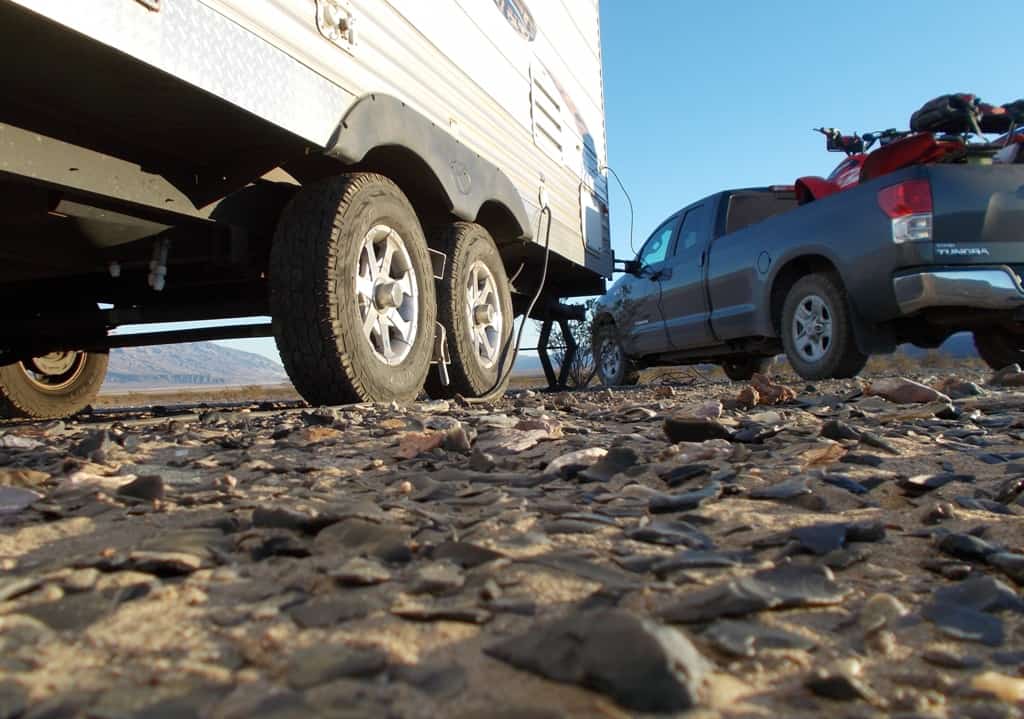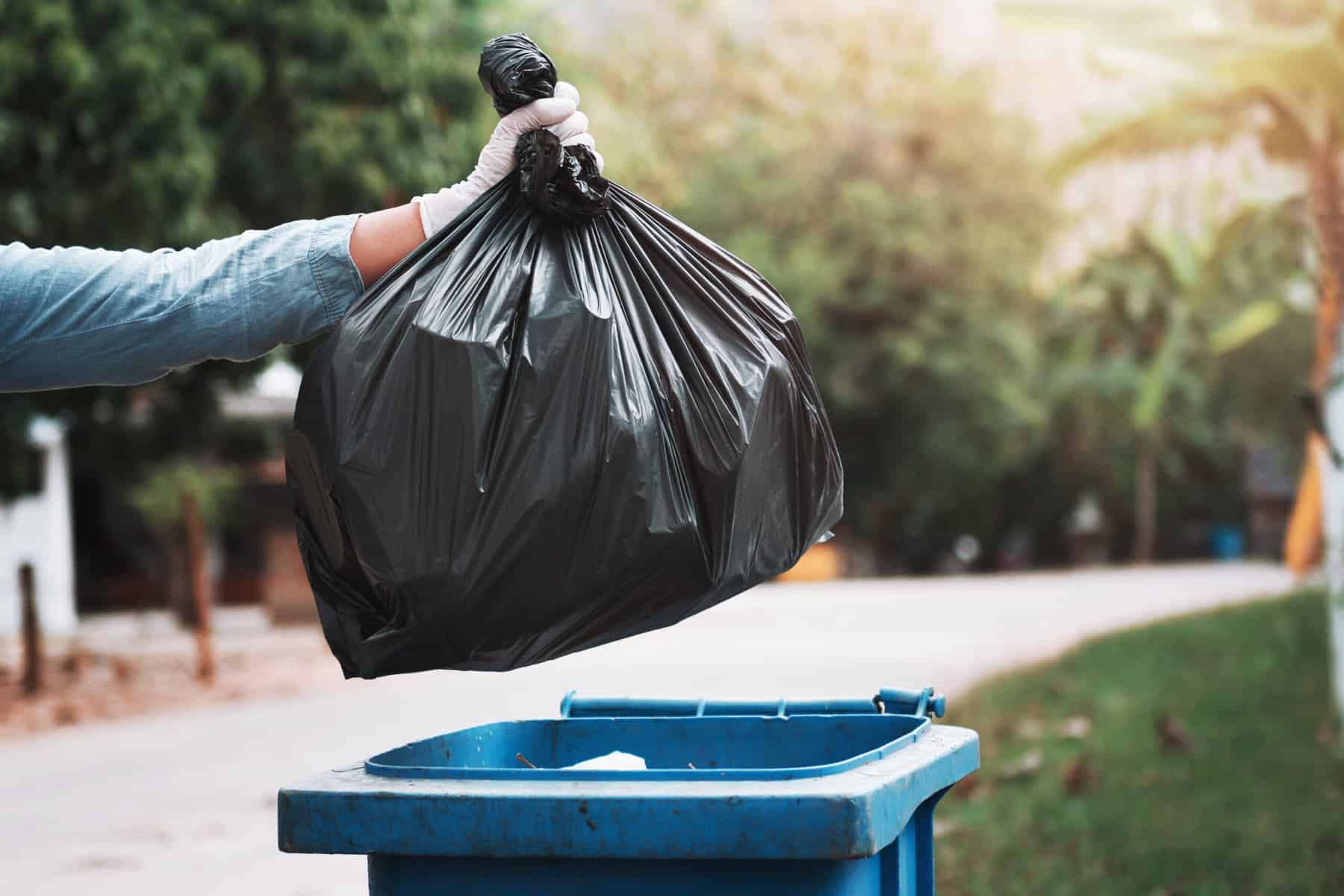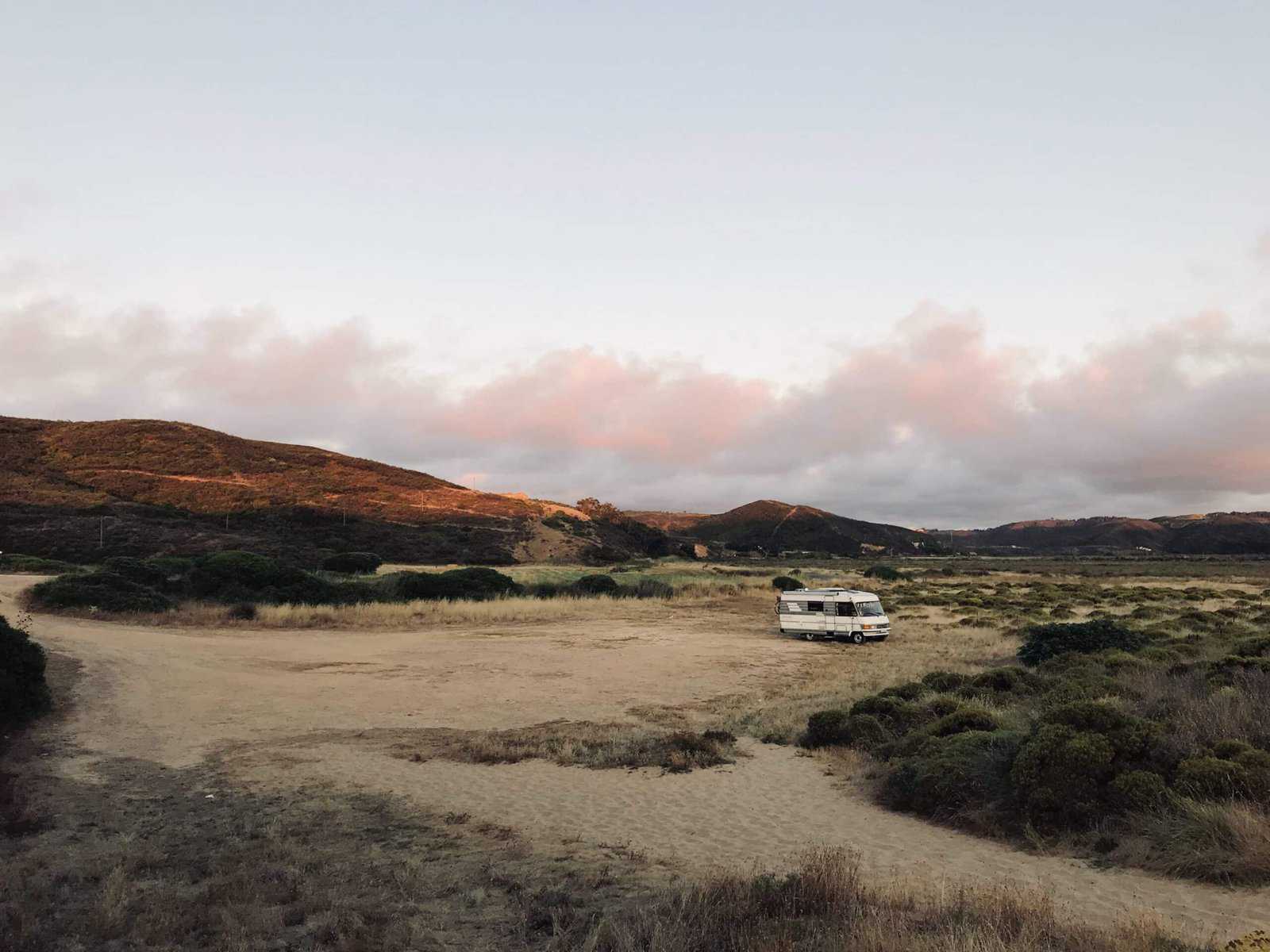The secret is out. Free camping on BLM land is awesome. BLM stands for “Bureau of Land Management,” the U.S. federal agency overseeing millions of acres of public recreation and agricultural lands, mostly in the western USA. But beginner boondocking on BLM’s remote public lands requires outdoor safety skills. Whether on foot or off-road vehicle, follow these tips to stay alive.
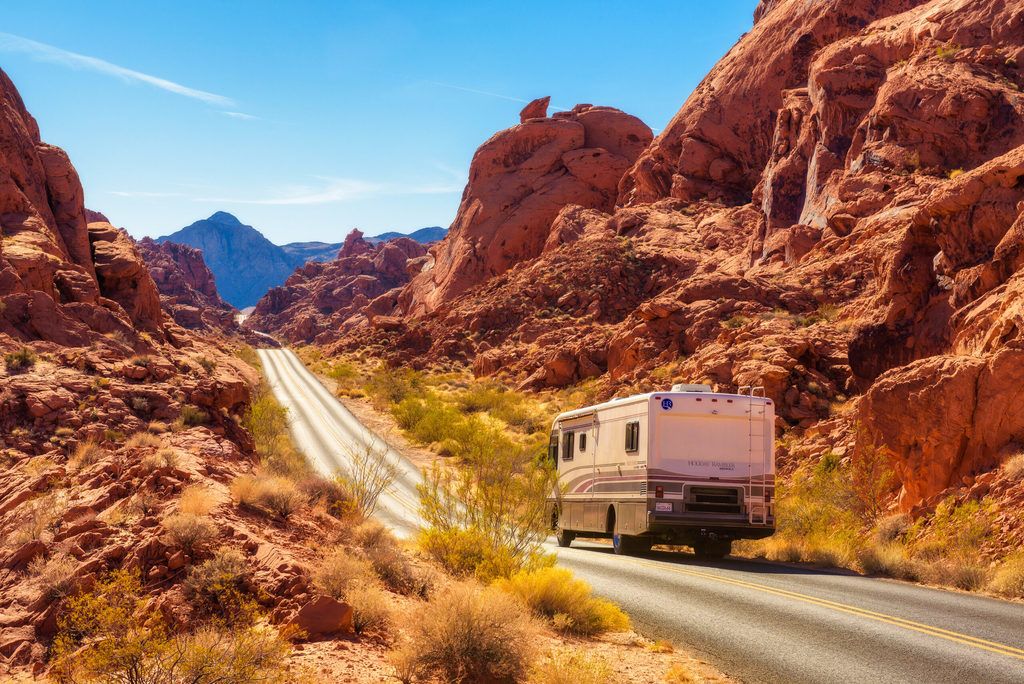
Essential beginner boondocking tip to stay safe on BLM land include:
- Carry a GPS unit and paper maps as a backup
- Pack essential survival gear. This includes a survival kit with first aid, calorie-dense food, flashlight, and a fire starter
- Dress in layers to prepare for weather changes
- Bring at least one half liter of water per hour, per person, if hiking in easy to moderate terrain
We also discuss if you should carry a gun on BLM land. Let’s get into the details to stay safe in the boonies.
Free Camping on BLM Land Can Be Life or Death
I’m a recent transplant to Arizona. When I arrived, I couldn’t wait to take my almost new Jeep off the highway. Arizona BLM land is vast and remote. This desert state has many miles of remote outback ready to explore. But I don’t do it without following boondocking safety protocols. If you’re not careful, you can die in these remote areas.
For example, recently a lady visiting from California went for an afternoon hike. She hiked on an established trail near me. But she only carried the clothes on her back and about one liter of water. Three days later, word got out that she died. Her body was found on a remote trail.
Beginner boondocking without a campground means knowing how to stay alive when out exploring. You can get lost and die in an off-road vehicle, or when hiking. Even people familiar with BLM land can get lost, or worse. Always think like a newbie. Follow these beginner boondocking tips whenever you head into the back country.
Beginner Boondocking Requires Safety Skills
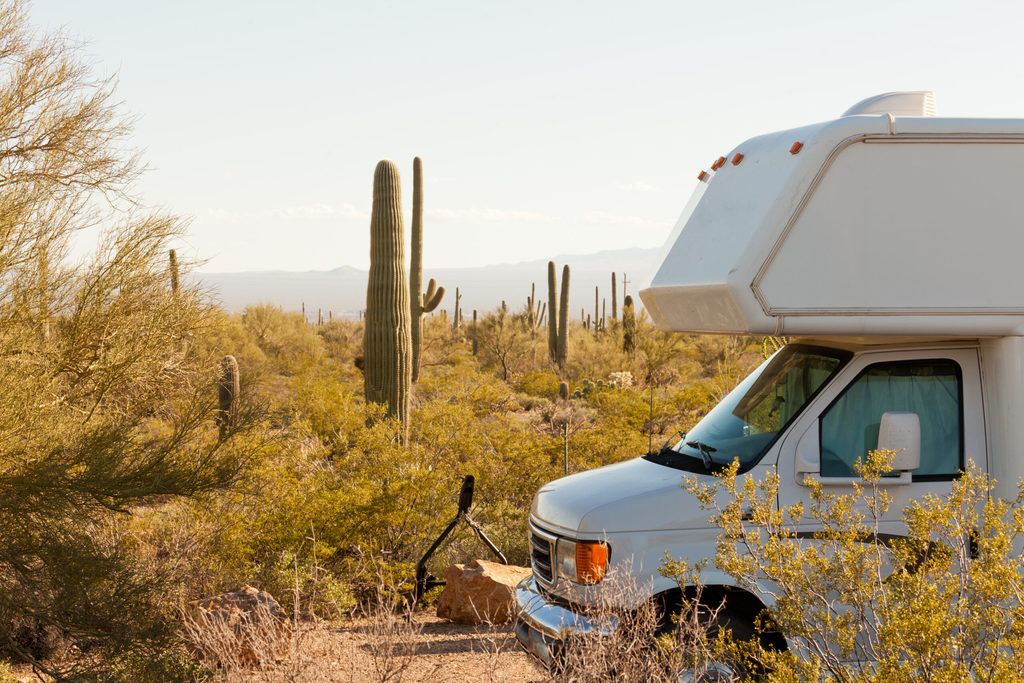
There’s a big difference between hiking and using motorized vehicles to explore BLM lands. With a vehicle, we are talking many miles of distance before you realize how lost you are. I have personal experience getting lost. Now I never search for free camping on BLM land without following these personal safety precautions.
If you’re RVing in an area without road signs, here’s a bare minimum list of beginner boondocking tips for camping on BLM land.
Carry a Hand-Held GPS Unit
Hand-held GPS units are a must-have for BLM boondocking activities. These devices keep you safe, by providing a track back to your starting point. On my first BLM jeeping trip, I discovered how a narrow opening down into a gravel desert wash. I explored many miles. Then I got lost on the return trip. Every small opening looked exactly the same as the one leading to my RV.
If you want to explore off-road on desert lands, it’s difficult to impossible to find your original point without a hand-held GPS unit.
Pro tip: carry at least one set of extra batteries, or a power cord for charging from your vehicle batteries.
Paper Topographical Maps are a Must
What if your GPS unit died? Paper topo maps are a must in the backcountry. Visit the local Bureau of Land Management. They usually carry detailed maps with trails and roads.
Pro tip: order paper topo maps before you go.
Pack Essential Survival Gear
Carry a well-equipped survival gear bag in your vehicle. A smaller one in your day pack is a must when hiking. Survival gear kits must include necessities like:
- tool to start a fire
- container to boil water
- first aid supplies
- analog compass
- flashlight
- whistle
- knife / multi-tool
- extra sunscreen
- a foil space blanket
Pro tip: a personal locator beam is a smart choice for any day hiker
Bring Water
The hiker that died carried one liter of water. That is about right for a leisurely stroll around your neighborhood. I carry two gallon jugs of purchased bottled water. A military canteen is in there too, in case I need to walk for help. When hiking, follow the American Hiking Society water recommendation: “As a guideline, plan for half a liter of water per hour in moderate temperatures/terrain. Carry enough water for your trip and know where and how to treat water while you’re out on the trail.”
Stash Survival Food Supplies
I don’t mean a picnic lunch. Pack non-perishable supplies, calorie-dense food in your vehicle. Canned sardines, nuts and other high protein items are good. You want things that don’t require refrigeration, cooking, or water. For your day pack, carry granola bars, fruit bars, and carbohydrates.
Dress in Layers
It might be 90-degrees when you are hiking in shorts and a tee shirt. But remember (especially when boondocking in BLM desert lands) that if you get lost, hyperthermia can happen. Temperatures drop dramatically after dark. Rain increase the risk of dying from exposure to the elements.
Dress in layers that you can remove as the day goes on. In mid-day sun, keep covered from head to toe. This helps retain water, and avoid sun stroke, sunburns, and heat exhaustion.
Pack a Simple Shelter
This can be as simple as a water resistant bedroll, or a foil survival blanket. I keep a plastic tarp and a wool blanket in my Jeep. With nylon rope in my survival kit, I can put up a tent in no time. A warm and dry shelter helps you stay alive at night.
Should You Carry a Gun on BLM Land?
Beginner boondocking RVers often ask if RV security is an issue. Or if you need to carry a gun on BLM land. The answer is that it depends on your personal opinion. Most RVers say safety when camping in remote areas is not a concern. Others always carry a gun on BLM land that’s far from services.
In Arizona where I live, carrying a concealed firearm without a permit is legal. Concealed carry laws vary from state to state. If you decide to carry a gun on BLM land, always check with local gun regulations.
Conclusion:
People that get into serious trouble are the ones that assume they are only going on a short afternoon excursion. Most believe they can easily return by retracing their path. My experience boondocking in remote areas and off-roading shows that it just doesn’t work that way. The first corner you go around, the first side trail that you pass, changes everything when you need to return.
Everything you do before and after heading out effects your survivability. Even the color of your off-road vehicle makes a difference. My bright orange Jeep can be seen easily if emergency services is looking for me.
Never assume you know everything about boondocking on BLM land. Always leave detailed instructions with someone. They can send out the alert if you don’t make it back to camp. Minutes and hours count when it comes to wilderness survival.

